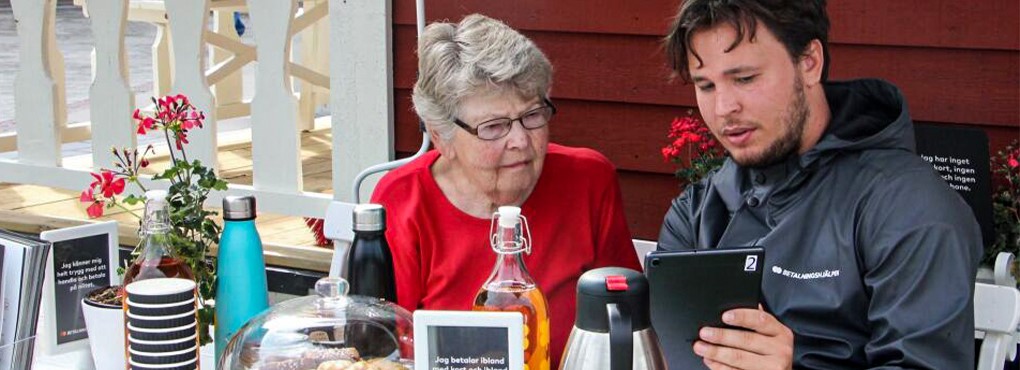
Tearing down the digital divide for senior citizens
August 20, 2020 | By Sophie HaresIn the pre-COVID era, many senior citizens would often wait until their digital-savvy grandkids visited on the weekends to help them shop and pay bills online. But today, in many countries, those visits are no longer possible. At the same time, the ability to make digital payments is becoming critical to our day-to-day lives, as more commerce moves online and brick-and-mortar stores move away from cash and toward contactless payments.
Before the pandemic, Sweden was already well on its way to becoming one of the world’s first cashless societies, with more than 90% of payments made electronically. But this digital revolution will fail to reach its potential if it leaves people behind, and nearly 1 million people, or 10% of the population, don’t have access to or trust in the digital tools that can ensure fast and safe access to their money, including online shopping, bill pay and banking.
The largest percentage of those are senior citizens — the same demographic who are also at greatest risk during the pandemic and will face continued isolation in the coming months, says Malin Berge, Mastercard’s Stockholm-based vice president for strategic growth.
Berge and her colleagues have been leading the charge to give older adults in Sweden the digital skills they need to navigate the new world of payments, a mission they have accelerated since the pandemic took hold.
In 2019, they launched Betalningshjälpen (Swedish for payment aid), an initiative supported by six Swedish banks and SPF Seniorerna, the country’s largest association for senior citizens. A Mastercard team traveled to 17 cities across Sweden with a cozy red cottage on wheels that they parked in the central square and invited seniors to learn more about digital payments and how to use the technology securely.
How does Swish, Sweden’s mobile payment app, work? If I tap my card on a payment terminal, do I have to use my PIN? Can someone steal my information from my card? Despite their concerns, Berge says nearly all of the red cottage visitors left feeling more confident about digital payments after chatting with Mastercard’s trainers.
They planned to set out on the road again this year but COVID-19 stopped that plan in its tracks. At the same time, the pandemic threatened older adults with digital exclusion and social isolation.
So in six weeks, the team rolled out a digital version of Betalningshjälpen, a website that can answer questions but is also backed by trainers who reach out to seniors via phone and email to talk them through the basics of digital payments as well as some of the trickier aspects of staying safe online.
This coaching has helped make it easier for seniors to deal with the disruption to their everyday lives — and it has also been a welcome interaction for many.
“These conversations have not only been instrumental for the elderly to receive guidance and how-tos but also valuable as it has been one of few social interactions during the isolation,” Berge says.
SPF Seniorerna and the Swedish banks are using their physical and digital channels to reach older people and help them cross the digital divide. The initiative could be expanded to help other groups, such as recent immigrants to Sweden who also rank among those most likely to be digitally excluded. “Mastercard has a vision globally, which is a world beyond cash,” Berge says. “The question we constantly keep coming back to is what if everyone could participate in a world without cash?”